| Spaceface - MOCA @ Luther Burbank Center - Santa Rosa, CA | 2004 | Cultural | Completed |
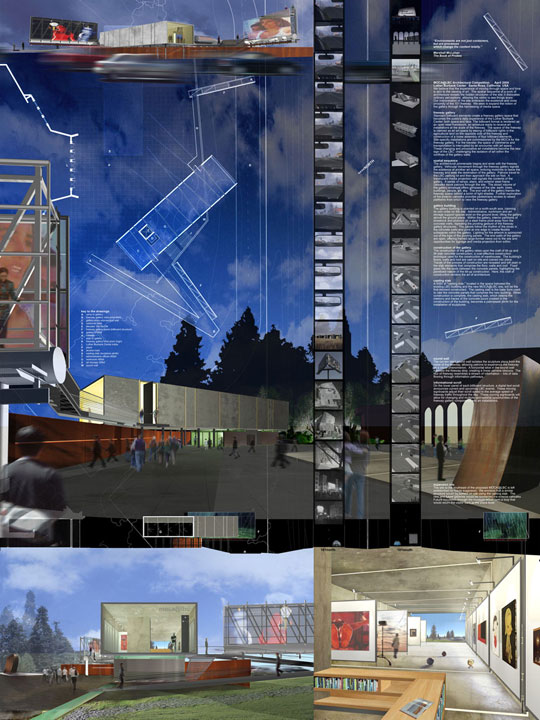



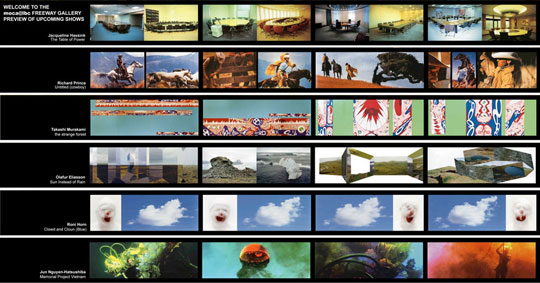



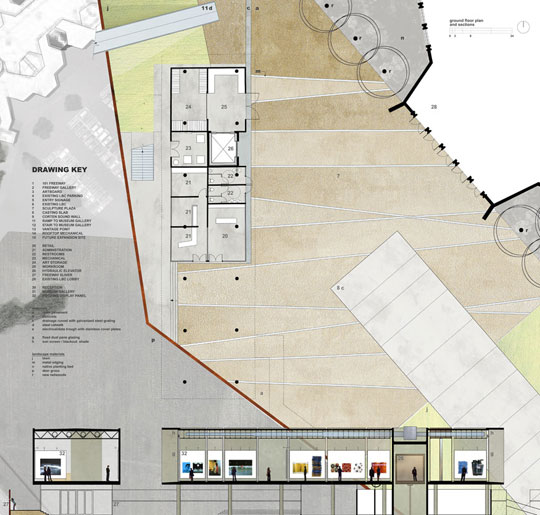
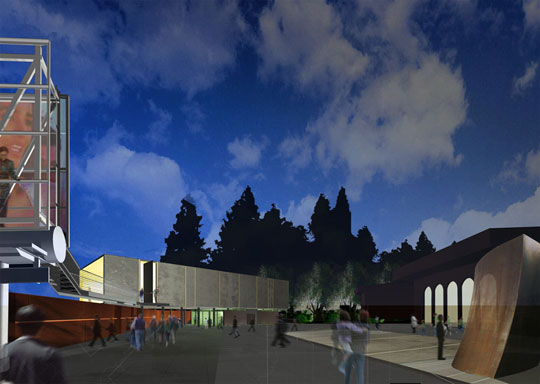

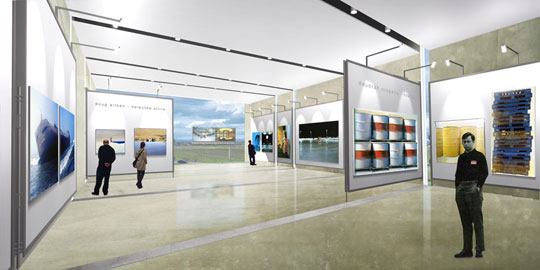
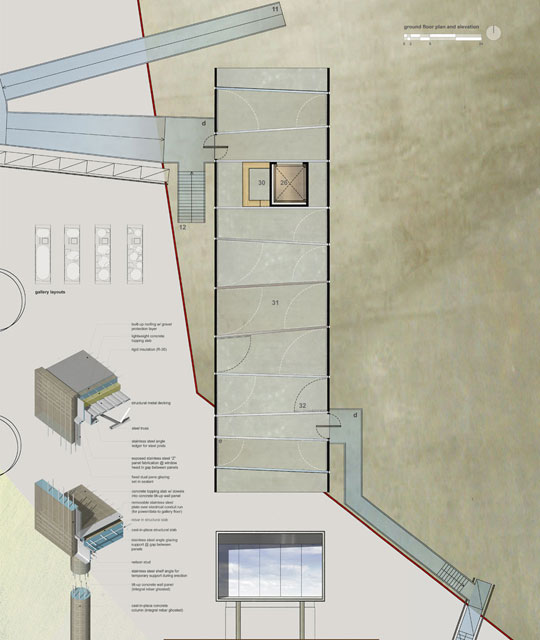
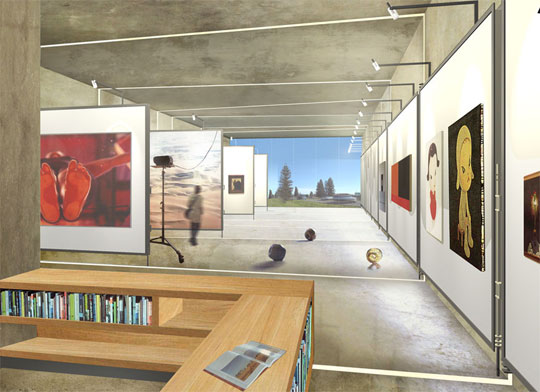

envelopeA+D was one of 40 entries invited to participate in a design competition for a new 5000 square foot building for the Museum of Contemporary Art at the Luther Burbank Center for the Arts (LBC). A panel of six jurors chose our entry as the winning design and awarded envelopeA+D the commission for the museum.
The competition went under the moniker of “spaceface,” a made up word capturing the desire of the Luther Burbank Center to have both a new space for the MOCA and a new face for the LBC. The project site is located between the existing Art Center structure and the 101 freeway.
The goal of the project is to create a “freeway presence” for the LBC while providing for a new MOCA facility. A new form of artspace, the freeway gallery is the first of three main spaces that sponsors increased visibility and capability for the LBC while performing a didactic role by bringing visual art to a wider public. Here, the museum expands its envelope to include the conduit of the freeway, bracketing a bubble of space through which the freeway speeds. With walls defined by art on billboard wings, the freeway gallery turns the museum inside-out and directly exposes a much wider public to contemporary artwork. The plaza provides a second space where, sheltered from the noise of the freeway, large-format sculpture mingles with the landscape. Designed as an event space, the hardscaped plaza is both entry and exit, forecourt and destination. The museum gallery, a strong, modest and intimate container, allows for simultaneous display of multiple exhibitions. Its pivoting interior display panels subdivide the space as needed. Its open ends and slots of light give reference to the larger context.
the freeway gallery:
The freeway gallery is to the Highway 101 as public sculpture was to the Renaissance City. Then, art was placed at the center of urban life where people lived and worked. Works of sculpture by renowned artists were placed in the central spaces of the city for the enjoyment and edification of its citizens and as an emblem of the sophistication of the city-state. Today, the freeway is one of our contemporary public spaces: a place of commerce and transport; a place where we spend much of our daily lives—moving from home to work, from work to play and back home again. In today's popular culture, the “road trip” posits the freeway as a place of recreation and a destination itself; the “road movie” is the Odyssey of our time.
The freeway gallery is a contemporary form, harnessing the dromoscopic experience of freeway travel by creating a perceivable artspace. The traveler approaches, enters headlong, experiences the art space, and exits (with a fleeting backwards gaze through the rearview mirror). Bracketed by four billboard structures (artboards), this new art space engages with people in their daily lives. The artboards appropriate the vernacular of the highway for the display of installation art by using the “ready-made” of the single-pole-cantilever billboard. Four 20x60 foot artboard display faces are the walls of this new gallery.
The freeway gallery taps into the kinetic experience of the speed of the expressway. Yet, the museum entry and pedestrian vantage points link the freeway gallery to the pedestrian experience. The space of the museum and the freeway gallery are linked via shared vistas to and from each other.